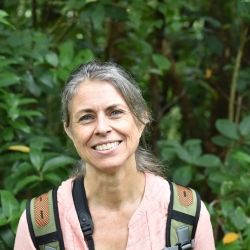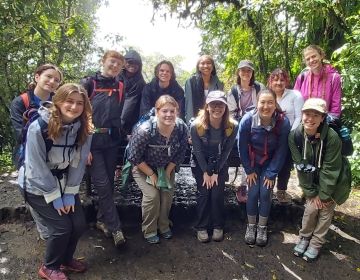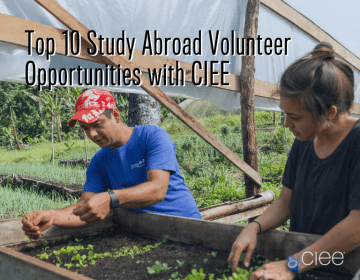Sustainability and the Environment: "Tessa's Internship Report"
Sustainable Landscape Planning Internship
For the past four weeks I have worked with a fellow classmate, Amanda Babcock, and our supervisor Felipe Negrini creating a comprehensive sustainable landscape design for public spaces along the main road from Santa Elena to the Monteverde Cloud Forest Preserve. Monteverde provides the unique background for this project, with roots in agriculture, a Quaker influence, an artistic presence, as well as land conservation of the biodiverse cloud forest. However, these roots are at risk of being diminished as development and increased human traffic are rapidly increasing in conjunction with minimal planning.
I was drawn to this internship as I am studying Urban and Environmental Politics, and in some of my classes we have discussed smart growth, the idea that when planning sustainably, communities should promote walkability, incorporate green space, and reduce sprawl. I thought it would be interesting to acquire practice with planning, as although my previous experiences in classes and internships have addressed its importance, actually going through the process would add a new dimension to my experience with urban planning. In addition, I saw this internship as a way to apply sustainable design principles.
This internship focused on going through the proper steps of planning in order to demonstrate the benefits of the process, as well as give creative ideas on how to improve the sustainability of the landscape. During the first week of our internship, Amanda and I drafted a site analysis, which involved noting the existing strengths, weaknesses, opportunities and threats of the entire sector (the distance from Santa Elena to the Monteverde Cloud Forest Reserve). After gaining a complete view of what existed, we began the creative process and came up with a conceptual design for the whole sector. Our design attempted to make the landscape more sustainable through aspects such as proposing the replacement of impermeable surfaces with permeable surfaces and planting native plants along trails. Our design also strived to make the area more appealing to walk through, for example through proposing benches with plantings, continuing sidewalks where they suddenly end, and incorporating art into blank walls and plain concrete sidewalks.
The first week involved walking the sector and digitalizing our notes into what would become the site analysis.
In the third week, we picked different transects (the entire sector was divided into five transects that represent the different environments along the sector), and each came up with a specific design that included drawings with specific materials and measurements. In order to follow the planning process through to installation, in the fourth week I designed and constructed a footbridge along a pedestrian trail to replace the existing old, broken bridge. Through constructing the bridge in a way that will last (using hardwood, heavy duty screws, and plenty of varnish), I hope to decrease the need for new materials that would be used if the footbridge were rebuilt in a way that would continually need repairs.
Before and after pictures of the footbridge
I feel as though I now have a good grasp on the planning process. It has been interesting to take on the lens of a landscape planner and observe what is around me, especially looking at what could be improved, where there are aspects of the environment that threaten safety or sustainability, and where there are opportunities to make a particular space more appealing, inviting, and environmentally conscious.
While installing the bridge feels like my greatest contribution in this internship because it is a physical improvement to the landscape of Monteverde, I also am proud of the plan we created, and hope that elements of it will influence the future of Monteverde.
Related Posts
Happy Earth Day: Today and Every Day
Happy Earth Day! Every April 22, this global event comes around to remind us how precious our planet is, what sustainable efforts we can make to protect Earth, and that... keep reading
Top 10 Study Abroad Volunteer Opportunities with CIEE
Have you ever wondered if you could volunteer abroad? Perhaps you're looking into study abroad programs that provide international volunteer opportunities. If you’re itching to study abroad and truly make... keep reading
Recycling Internship with ADI San Luis
Written by Maya Peske (Cornell College), Internship in Sustainability and the Environment The road from San Luis up to Monteverde is well known by all of the people in the... keep reading



